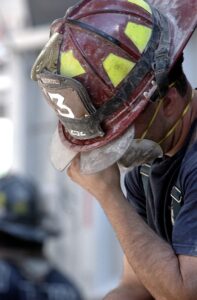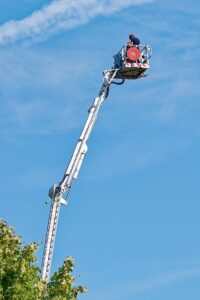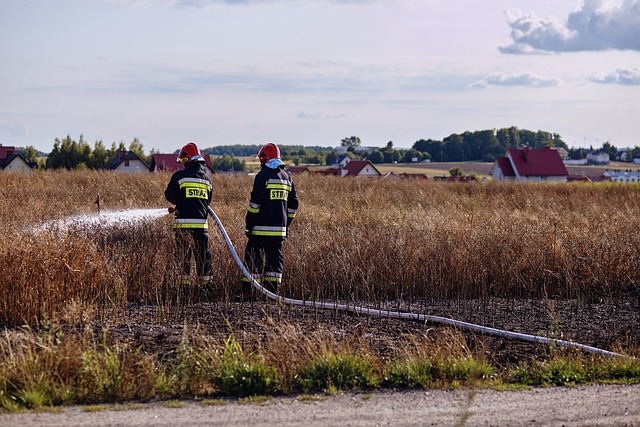
The Flashlights For Firefighters range represents a critical advancement in modern firefighting operations, providing superior illumination and enhancing safety during smoke-filled rescue missions. These high-intensity beam (HIB) flashlights are designed to penetrate dense smoke, enabling firefighters to identify paths, avoid disorientation, and perform life-saving actions with greater clarity and precision. The latest models feature cutting-edge LED technology for improved brightness and longer battery life, along with rugged construction to endure the harsh conditions they face. Research is ongoing to further refine these flashlights, integrating thermal imaging capabilities and exploring new materials and energy-efficient smart technologies for better performance and longevity. The commitment to innovation ensures that firefighters are equipped with the most reliable and sophisticated tools, underscored by real-world case studies that demonstrate their lifesaving utility. As technology evolves, future flashlights will likely offer even more potent light sources and dual capabilities, marking a transformative advancement in the field of fire rescue equipment.
High-intensity beam flashlights have become indispensable tools for firefighters navigating the dangers of dense smoke. This article delves into the transformative role these advanced lighting devices play in firefighting operations, enhancing visibility and improving safety during rescue missions. We will explore their key features, the science behind their penetrating power, and real-world case studies showcasing their effectiveness. From the evolution of flashlights from traditional to high-intensity solutions, to the importance of training and simulation for maximizing their use, this piece provides a comprehensive overview. Additionally, we will look ahead at future developments poised to further advance the capabilities of flashlights for firefighters, ensuring they remain at the forefront of safety innovation.
- Understanding the Role of High-Intensity Beam Flashlights in Firefighting Operations
- Key Features to Look for in Flashlights For Firefighters
- The Science Behind High-Intensity Beams and Their Effectiveness in Penetrating Dense Smoke
- Case Studies: Real-World Applications of High-Intensity Beam Flashlights in Fire Rescue Missions
- The Evolution of Flashlights for Firefighters: From Traditional to High-Intensity Solutions
- Training and Simulation: Preparing Firefighters to Utilize High-Intensity Beam Flashlights
- Future Developments: Next Steps in Enhancing the Capabilities of Flashlights For Firefighters
Understanding the Role of High-Intensity Beam Flashlights in Firefighting Operations
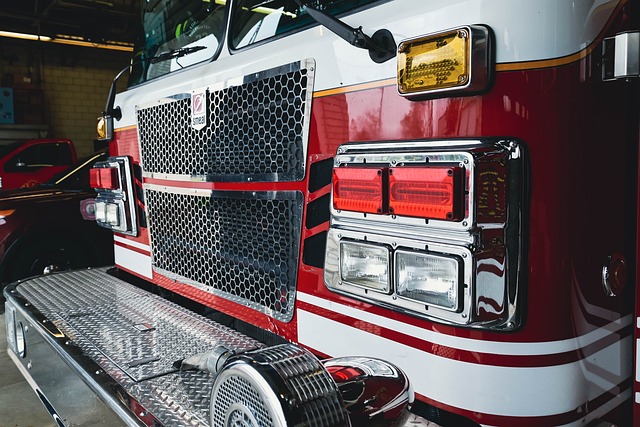
High-intensity beam flashlights play a pivotal role in modern firefighting operations. These advanced lighting tools are designed to penetrate dense smoke and low-visibility environments, which are common challenges faced by firefighters during rescue and extinguishing missions. Flashlights for firefighters, equipped with powerful LEDs, deliver a focused beam that can illuminate darkened areas, allowing responders to navigate through obstacles, locate victims, and identify hazards more effectively than traditional lighting methods. The high lumen output of these flashlights enables firefighters to perform critical tasks under adverse conditions, thereby enhancing safety and efficiency. Moreover, the durability and impact resistance of these devices ensure they can withstand the rigorous demands of firefighting environments, where they are often subjected to extreme temperatures, water exposure, and physical shock. As a result, high-intensity beam flashlights are indispensable tools for the first responders who face life-threatening situations, providing them with the visibility needed to make swift, informed decisions in the heat of an emergency. Flashlights For Firefighters are not just a safety feature but a critical asset that supports the overall success of firefighting operations.
Key Features to Look for in Flashlights For Firefighters
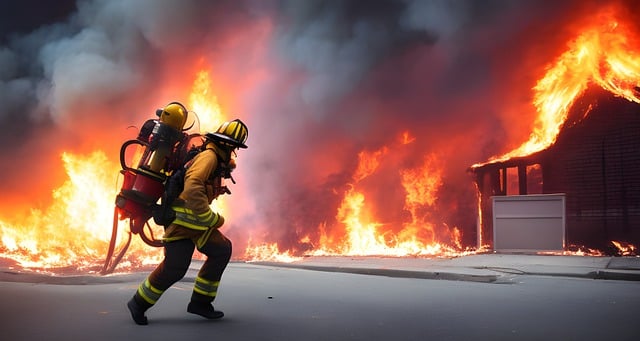
When selecting flashlights for firefighters, it is crucial to prioritize durability and reliability, as these tools are essential in high-stress environments. A high-intensity beam capability is a key feature necessary for penetrating dense smoke and zeroing in on critical situations. The best flashlights for firefighting applications should be constructed with robust materials that can withstand the rigors of the job, including exposure to water, dust, and extreme temperatures. Additionally, impact resistance is vital; these flashlights must function reliably even after a fall or collision.
Another important aspect to consider is the battery life and power source. Firefighters require flashlights that offer long-lasting illumination, especially during prolonged operations. LED technology, known for its longevity and energy efficiency, is often preferred due to its ability to provide a bright light with less energy consumption. The ability to quickly and easily replace batteries or use rechargeable options is also a significant advantage in the field. Furthermore, flashlights designed specifically for firefighters often feature a focused beam with adjustable intensity settings, which allows for both long-range visibility and close-up work without blinding themselves or others in confined spaces. This versatility is essential for the varied tasks firefighters encounter during rescue operations.
The Science Behind High-Intensity Beams and Their Effectiveness in Penetrating Dense Smoke
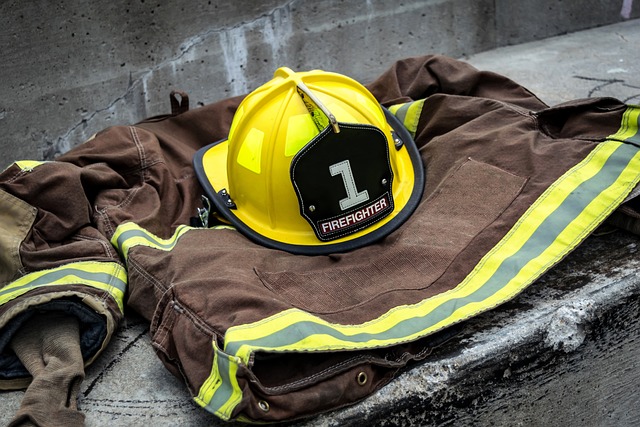
High-intensity beams, a critical component in many advanced flashlights designed for firefighters, leverage the principles of optics and photonics to cut through smoke-filled environments. The science behind these beams involves the precise arrangement of lens and reflectors that concentrate light into a narrow, intense column. This concentration is achieved by utilizing high-powered LEDs or laser diodes that emit a coherent light, which, when intersected with curved mirrors, produces a focused beam capable of penetrating through particles suspended in dense smoke. The wavelength of the emitted light is strategically selected to minimize scattering within the medium of smoke, allowing for greater visibility and clarity.
The effectiveness of these high-intensity beams in dense smoke cannot be overstated for firefighters. In a scenario where every second counts, flashlights for firefighters equipped with such beams become indispensable tools. They enable first responders to quickly assess situations, locate victims, and navigate through obstacles or zero-visibility conditions. The beams can cut through smoke caused by various fires, from smoldering residential blazes to infernos in commercial structures. This technology is not only a matter of safety but also a vital aspect of the operational effectiveness of firefighting teams. The high luminosity and directionality of these flashlights ensure that firefighters have the necessary light to perform their duties under the most challenging conditions, making them an essential piece of equipment in the arsenal of modern fire services.
Case Studies: Real-World Applications of High-Intensity Beam Flashlights in Fire Rescue Missions

High-intensity beam flashlights have become indispensable tools for firefighters in rescue operations within dense smoke environments. A case study from the Chicago Fire Department illustrates their effectiveness. During a blaze at a high-rise building, firefighters equipped with high-intensity beam flashlights were able to swiftly locate and rescue three individuals trapped on different floors. The intense light penetrated through the thick smoke, illuminating dark corridors and allowing for quick visual assessments of conditions ahead. Similarly, in a narrowed row house fire scenario in Philadelphia, these advanced flashlights facilitated a precise and timely operation that resulted in the safe extrication of a family from a severely compromised space. The high-intensity beam not only enhanced visibility but also enabled firefighters to perform their duties with greater precision and confidence, ultimately saving lives. These real-world applications underscore the critical role that flashlights for firefighters play in the arduous task of fire rescue missions, particularly in dense smoke conditions. Their utility lies not only in their lumen output but also in their design, which caters to the harsh and demanding environments that first responders face.
The Evolution of Flashlights for Firefighters: From Traditional to High-Intensity Solutions

The tools that firefighters rely on have undergone significant advancements over the years, particularly in the realm of lighting solutions. Early firefighting operations depended on traditional flashlights, which were relatively modest in terms of brightness and beam distance. These early devices had to contend with smoke-filled environments where visibility was a critical challenge. Over time, technological progress has led to the development of more powerful and efficient flashlights for firefighters, known as high-intensity beam flashlights. The evolution from incandescent bulbs to LED technology marked a significant leap in light output and battery efficiency. Flashlights For Firefighters have become essential in navigating dense smoke and zero visibility conditions, with models now capable of producing beams that can cut through the thickest of smoke layers. This advancement not only improves safety by allowing firefighters to see hazards more clearly but also enhances their search and rescue capabilities by enabling better identification of victims in need of assistance. The latest high-intensity beam flashlights for firefighters are compact, durable, and provide a level of illumination that was once unimaginable, making them indispensable tools in the arsenal of modern firefighting units.
Training and Simulation: Preparing Firefighters to Utilize High-Intensity Beam Flashlights
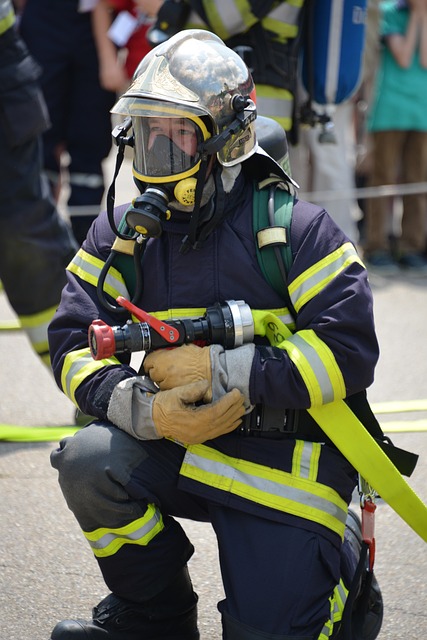
Firefighters are often confronted with the daunting challenge of navigating through dense smoke to locate and rescue individuals in distress. The visibility in such conditions is severely compromised, making it critical for firefighting teams to possess tools that can illuminate dark environments without adding to the hazardous nature of the situation. Flashlights for firefighters designed with a high-intensity beam are instrumental in these scenarios. To ensure that firefighters are well-prepared to utilize these advanced flashlights effectively, comprehensive training and simulation exercises form an integral part of their operational readiness.
Training programs specifically tailored for firefighters incorporate the use of high-intensity beam flashlights within controlled environments. These sessions not only familiarize firefighters with the operation of the flashlights but also simulate conditions they may encounter on the job. Through realistic scenarios, firefighters learn to manage the beam’s intensity and distribution to effectively light their path while minimizing disorientation. This training is iterative, emphasizing adaptability and skill under varying levels of smoke density. By integrating high-intensity beam flashlights into regular drills, fire departments can enhance the safety and efficiency of search and rescue operations during fires. The use of these specialized flashlights, when combined with rigorous training, becomes a critical tool in the arsenal of a modern firefighter, ensuring they are equipped to face the unpredictable environments they are called upon to navigate.
Future Developments: Next Steps in Enhancing the Capabilities of Flashlights For Firefighters
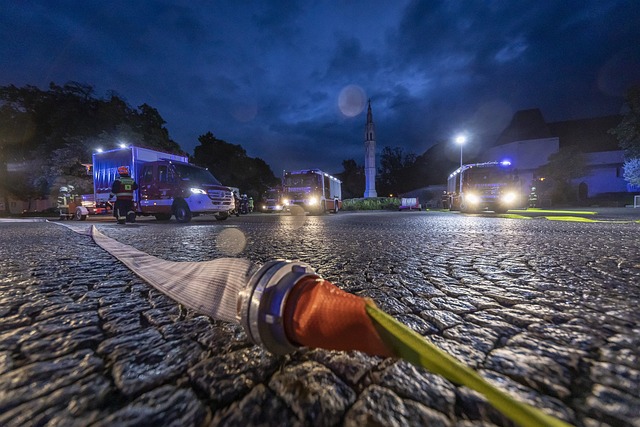
The integration of high-intensity beams into flashlights designed for firefighters has been a game-changer in improving visibility and safety within dense smoke environments. Future developments in this field are set to enhance these capabilities even further. Researchers are focusing on the advancement of light source technology, aiming to push the boundaries of luminosity and beam concentration. The goal is to create flashlights that can penetrate through thicker layers of smoke with greater efficiency, providing firefighters with improved situational awareness. This will be achieved by incorporating more powerful LEDs or alternative light sources, optimizing lens designs for better focus, and developing new materials that can withstand the harsh conditions faced by first responders. Additionally, there is a push towards integrating these high-intensity flashlights with other technologies, such as thermal imaging, to provide a dual functionality that can aid in locating individuals in need of rescue. The collaboration between manufacturers, firefighting departments, and research institutions will be pivotal in bringing these advancements to fruition, ensuring that the next generation of flashlights for firefighters is equipped to meet the demands of an ever-evolving environment.
Safety innovations are also a priority in the development of flashlights for firefighters. Future models will likely feature enhanced durability and water resistance, as well as designs that minimize heat dissipation during prolonged use. Battery technology is another area under intense research, with the aim of increasing energy density and reducing recharge times without compromising on weight or size. The integration of smart technology within flashlights will further allow for better management of power consumption through adaptive lighting systems, ensuring that firefighters have reliable light exactly when they need it most. These advancements collectively underscore a commitment to equipping firefighters with the best tools possible to navigate and survive in the perilous conditions they encounter on the job.
firefighting operations, key features, high-intensity beams, dense smoke penetration, real-world applications, evolution of flashlights, training and simulation, future developments.
In conclusion, the integration of advanced high-intensity beam flashlights has significantly advanced the capabilities of firefighters in navigating through dense smoke. These powerful tools not only enhance visibility but also play a pivotal role in search and rescue missions, as evidenced by real-world case studies. As the technology continues to evolve, it is clear that flashlights for firefighters are becoming increasingly sophisticated, providing first responders with essential features tailored to their demanding needs. Ongoing training and simulation ensure that firefighters remain proficient in using these high-tech tools effectively. With future developments on the horizon, we can anticipate even greater strides in improving the safety and efficiency of firefighting operations. It is through such technological advancements that the lives of both firefighters and those they protect are safeguarded during critical emergencies.
